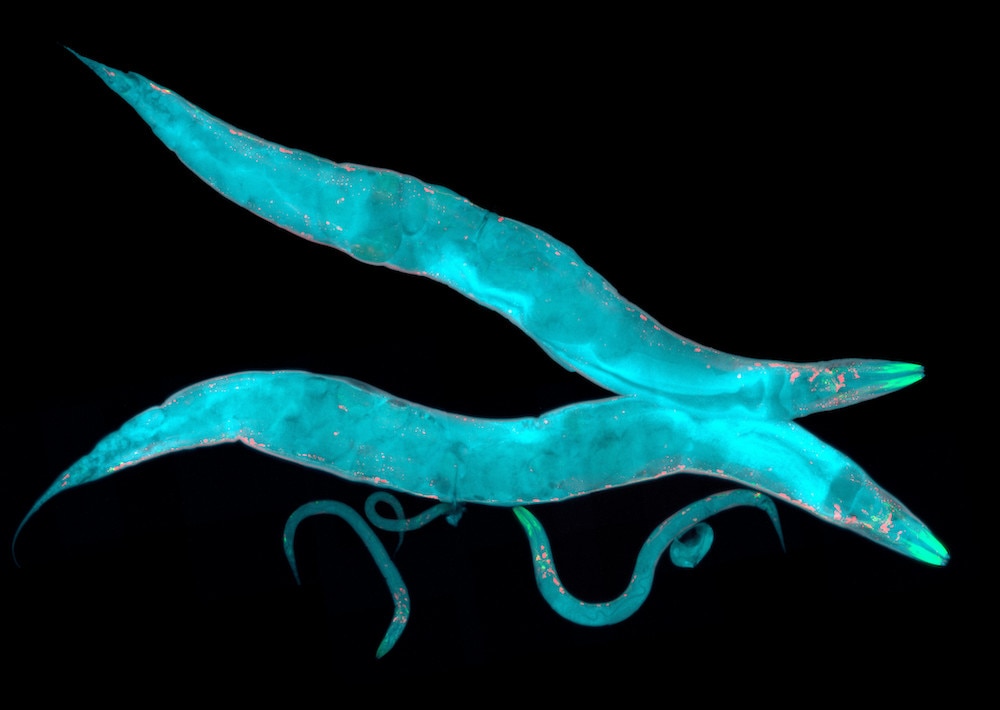Create a free profile to get unlimited access to exclusive videos, sweepstakes, and more!
Worms are Hulking out in space so astronauts won't lose muscle
Bruce Banner has nothing on these creepy crawlies.

Maybe they aren’t as pumped as Bruce Banner (or Earthworm Jim), but nematodes in space have flexed some serious muscle in the fight against microgravity muscle loss.
It’s kind of like going from Hulk to human and back. C. elegans worms that were grown both in space and in simulated microgravity on terra firma showed reduced levels of dopamine and calcium — which are important for boosting muscle — when placed in a sort of sensory deprivation tank. They ended up sluggish and weak. However, worms in the same environments showed no atrophy when they were given objects to have physical contact with.
The amazing thing is that the deprived worms Hulked out again and were able to flex as much muscle as the others when given something to hold on to. This is what molecular biologist Atsushi Higashitani of Tohoku University in Japan found out when he and his research team gave these worms, which are physically affected by microgravity much like humans, a neuromuscular endurance test made for a superhero. He led a study recently published in iScience.
“In microgravity, which is less stimulating, the dopamine system functions less frequently and caused the worms to become unmotivated,” Higashitani told SYFY WIRE. “Not only does dopamine degrade, but it also leads to a loss of muscle mass due to its low synthesis.”
Yes, dopamine is that same neurotransmitter that gives you a rush of motivation when you smash a personal best in the gym or pleasure when indulging in a Marvel movie marathon. Low levels of dopamine can mean that motivation to move plummets. In microgravity, astronauts’ muscles and bones do not have as much motivation to move, even if the astronauts don’t realize it. The absence of gravity means that their bodies are already being suspended in thin air, so there is no pressure on muscle and bone to put in the effort to keep them from falling.
It’s not that astronauts get lazy in space. Their bodies do without realizing it, because there is nothing to hold them down or to hold on to. Touch is experienced through mechanosensory structures that act like transducers and convert stimuli and forces, such as pressure, into electrical signals that are zapped to the central nervous system. From observing the worms, Higashitani thinks that physical contact activates mechanosensory neurons and other structures, which switches on dopamine activation, which turns into movement activation.
“Reduction in muscle calcium firing levels seems to be an indicator of muscle contractility,” he said. “When the worms grew under microgravity, their muscle strength was greatly reduced. The dopamine system is thought to be weakened and the vitality of exercise is reduced.”
The worms had plastic microbeads to hold on to. For humans, working out in space is necessary for if they want to stay in shape without the resistance of gravity, and contact with exercise equipment helps, but giving dopamine levels an assist and putting muscle degeneration on hold could be as easy as giving hand and foot massages to astronauts. We also get a dopamine rush when we lie down here on Earth because we release our feet from bearing our weight. There is a new gravity sleeping bag being tested out for astronauts, and it could offer that same effect.
“Astronauts actively perform exercise in orbit, and at that time, contact stimulation is also loaded from the limbs,” said Higashitani. “So far, the effects of non-irritating limbs (less of contact stimuli) have been overlooked.”
Maybe someday, when we decide to venture beyond the moon (if that’s even safe with so much cosmic radiation), a journey to Mars may not decimate astronauts’ bodies.


























